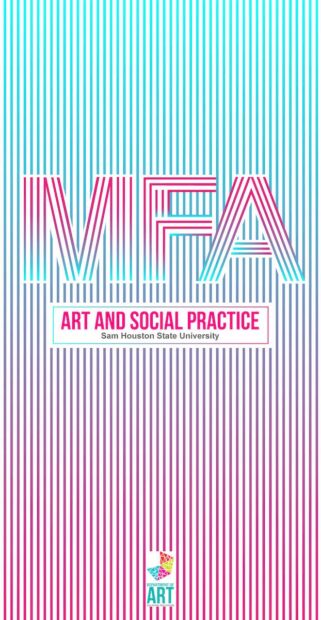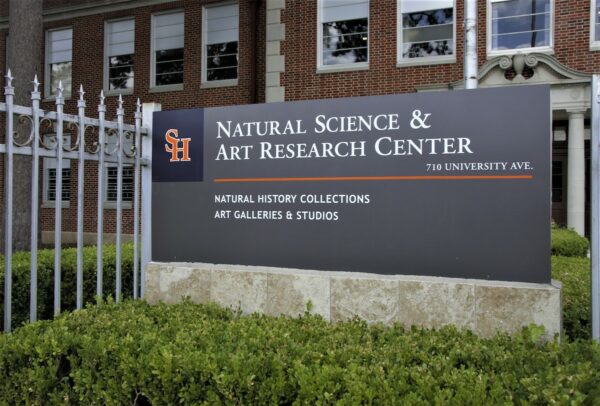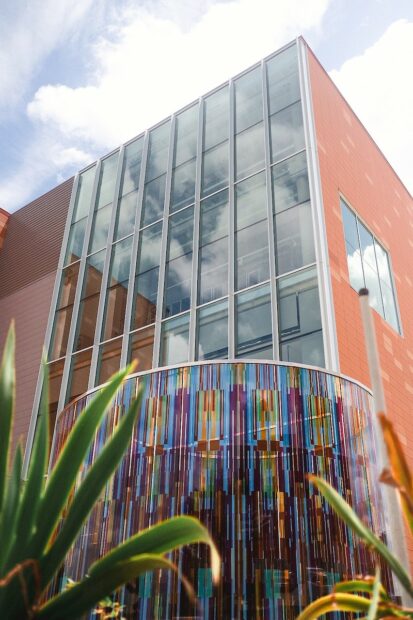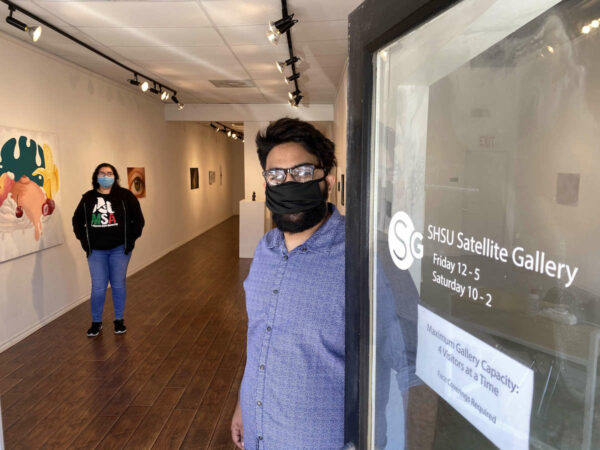I didn’t attend Sam Houston State University (SHSU), but I’ve spent plenty of time with a number of colleagues who have, either as students or professors. The common refrain from all of them is that they deeply appreciate SHSU’s tight-knit sense of community — a sense of valuing human relationships. So it follows that, in preparation for next fall, SHSU is expanding its MFA degree programs to include Social Practice, the crux of which is to engage with community.
Sam Houston will be a pioneer in the field: it will be the first and only Texas university to offer this degree program. Says Michael Henderson, Professor and Chair of SHSU’s Department of Art: “This MFA program is unique to the state of Texas and appeals to students who want to use art as a means to create projects that enhance awareness of societal, cultural, ecological or political issues that are of immediate public concern.”
The offering could not be more timely: as the country feels unmoored and uncertain — as it confronts a racial reckoning and a devastating virus, encountering steep division — many artists wonder how their work fits into the bigger picture, how it engages with the moment, how it responds, how it galvanizes people. Many artists feel a sense of urgency to infuse their work with the kind of purpose that directly correlates to the tectonic cultural shifts taking place in the world right now, rather than sitting on the sidelines and making work divorced from that reality.
The university’s MFA in Art and Social Practice is a three year, 60-credit-hour degree program with a focus on developing students’ studio practices into ones that are fundamentally interdisciplinary, collaborative, and community-based.
While the degree program is designed for community outreach and participation from local organizations, SHSU is recruiting students from all walks of life: the school is looking for artists with backgrounds in 2D, 3D, graphic design, animation, digital media, and time-based studio art, among others. Other than the unique sense of community that SHSU provides — and other than that intense and incubatory feeling that comes with developing and molding one’s work throughout the MFA process — the school also provides two key things artists rely upon: space and access. Each student receives a private studio space in a newly renovated building, the Natural Science and Art Research Center (NSARC), which is only a few blocks from the main campus in downtown Huntsville. NSARC also houses art galleries and community meeting rooms. Its central location makes NSARC easily accessible to the greater Huntsville community, making collaboration not only possible, but optimal. NSARC is also home to SHSU’s Natural Science collection, which furthers the potential for interdisciplinary germination.
And MFA candidates of course have access to the 75,000-square-foot, state-of-the-art campus building known as the Dana G. Hoyt Fine Arts Building. Still new, the building was completed in 2019 and houses cutting-edge art studios and labs, including public galleries, design studios, animation studios and computer labs, photography darkrooms, studio and digital photo labs, as well as sculpture, ceramic, painting, and drawing studios.
And SHSU also provides student support. First-year MFA candidates can receive a Graduate Assistantship with the University Art Galleries, the Visual Resources Center, or with W.A.S.H., the university’s Undergraduate Foundation Program. Second- and third-year candidates — after having taken the ARTS 5313 Teaching Seminar — are eligible for Teaching Assistantships in W.A.S.H. or other foundations courses. Scholarships are also available, and MFA students can apply for in-state tuition.
The Social Practice program provides MFA candidates with opportunities throughout school as well as beyond graduation. These include working with artists-in-residence on socially engaged projects; travel, research, and study-abroad opportunities in Europe and South America; two graduate exhibitions: one at the conclusion of the first year and the thesis exhibition at the conclusion of the third; and a collaborative publication of an exhibition catalog of thesis projects. Students will also work directly with local art centers, museums, galleries, advocates, non-profits, and visiting artists on community-based projects.
These forms of connection and collaboration don’t just generate the heartbeat of Social Practice art. They provide critical inroads for students to thrive post-graduation. As Henderson says, “Our graduates will be entrepreneurs who create new programs that engage communities through non-profit as well as commercial organizations. Having a group of local and visiting artists working in Huntsville will enrich the city as they develop projects and exhibit works that focus on important issues and tell stories that are relevant to and come from the local community.”
Applications are due March 1, 2021; please go here for details. And although the Sam Houston Art Department recommends that prospective students apply as early as possible, as scholarships and assistantships are competitive.
For questions and more information, please email Professor Rebecca Finley, Graduate Coordinator: [email protected].








